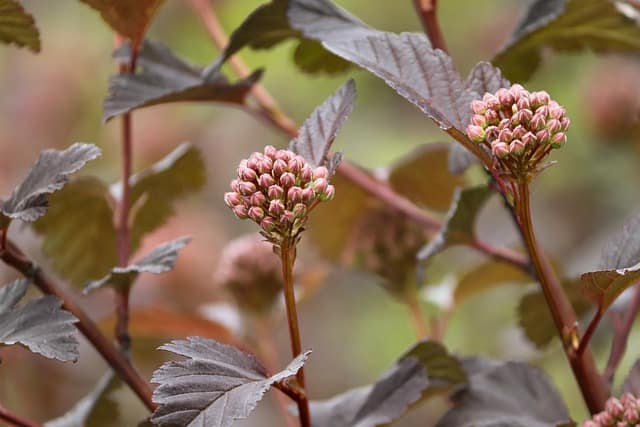Ninebark mainly dies due to root rot. Ninebark plant could also die due to transplant shock. Nutrient deficiency can also kill the Ninebark plant.
Ninebark is loved by many gardeners around the world and rightly so. Its colorful foliage is a great addition to any garden.
The plant gets its name due to its characteristic feature of exfoliating bark. The plant is hardy and beginner-friendly in most cases.
In some cases people the plant does run into issues. Let’s see why and how.
Why are my Ninebark leaves curling?
Ninebark leaves get curled, turn brown and fall off when the growing medium is clay soil. The plant fails to absorb the required nutrients from clay soil.
This usually happens in plants that are planted in clay soil. Plants that grow in clay soil find it hard to absorb essential nutrients and water.
To fix: Add a lot of manure or compost into the soil and mix it up evenly. You’ll see that now the soil feels lighter. Add fine gravel if needed to increase drainage in the soil.
Why is my Ninebark Wilting?
Wilting is mostly seen in newly planted Ninebark plants. Ninebark plants can be over-dramatic until they get established.
Give the plant some time. Water your Ninebark frequently. Water the plant when the top inch of the soil goes dry, check this with your finger.
Tip: Check if there’s any gap between the rootball and the soil.
Why are my Ninebark leaves turning brown?
Ninebark leaves turn brown due to the reasons stated below.
- If the plant is new, transplant shock may be a reason. It happens if the plant was planted too late in the season and it didn’t have time to establish.
- Get the soil tested for any nutrient deficiency or pH imbalance.
- Root rot causes browning of the foliage too, so closely monitor the symptoms and identify the issue.
To fix:
- If it is transplant shock, you need not worry much, just take good care of the plant and it will recover.
- Take the plant with the most symptoms and take it to a laboratory for testing. Treat the plant accordingly after the test results.
- I advise you to take pictures of the plant every week and document the results. Treat the plant accordingly.
Why is my Ninebark not blooming?
Pruning hard or pruning wrongly is the main reason why the Ninebark plant fails to bloom. Ninebark plant needs proper sunlight and water to blossom.
Proper sunlight and watering are required for on-time blooming. Make sure the plant’s getting the nutrients it requires.
When should I prune Ninebark?
If you want to prune, prune the plant right after it stops blooming. Summer or fall is the best time to prune your Ninebark.
If you want a compact bush you may need to sacrifice blooming. Most prefer the shrub’s natural look and don’t prune it at all.
Frequently Asked Questions
Many Ninebark growers mail me often and ask the same questions again and again. I decided to answer them all in this blog post.
Does Ninebark need full sun?
You may want to plant Ninebark in a place where it receives full sun to partial shade. It will thrive best in full sun.
In the northern regions, it will grow best if planted in full sun. As we go south, Ninebark prefers partial shade more and more.
How far apart do you plant Ninebark?
Ninebark gives out good color foliage, especially in the spring. To get the most benefits you need to plant it 5 feet apart from the center.
This way you can grow a beautiful hedge without needing additional plantlets.
Is Ninebark deer resistant?
Almost all the species of Ninebark are deer resistant. People in places with a lot of deers usually have these in their garden.
Happy Gardening 🙂

